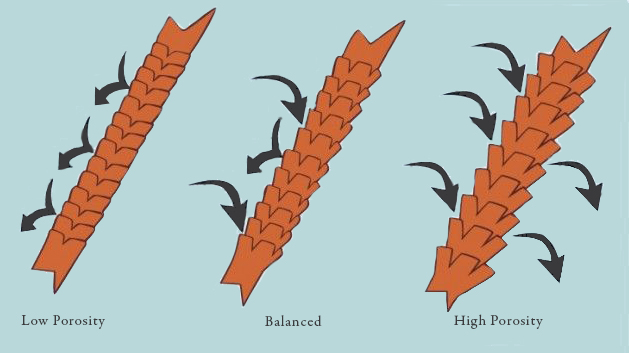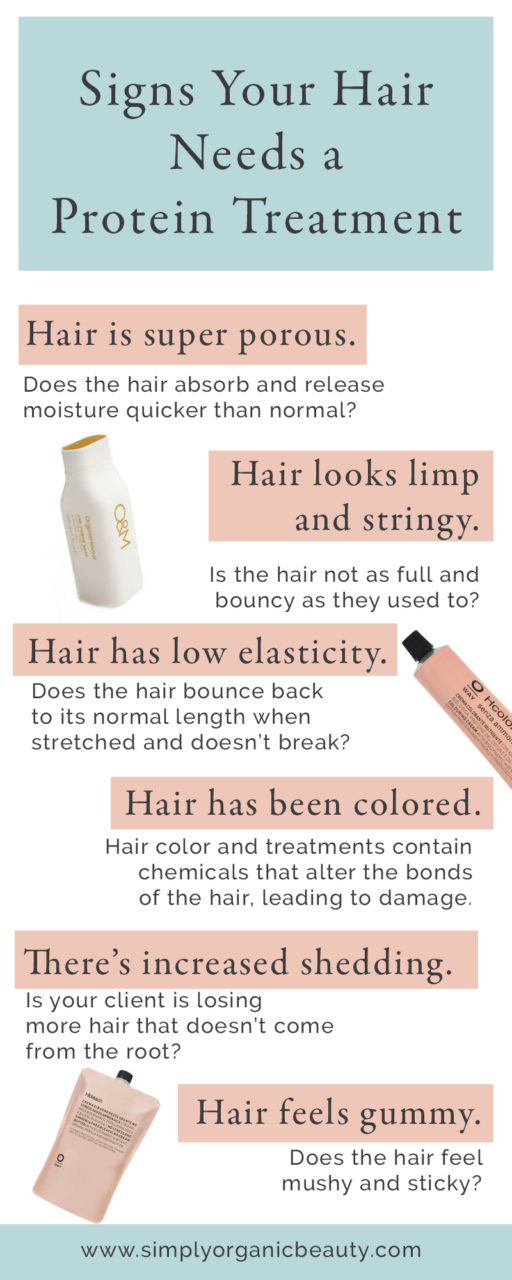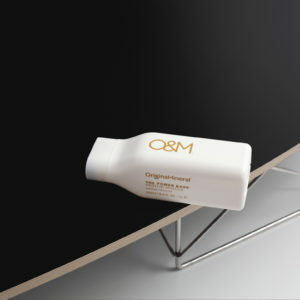Protein deficiency is a topic you rarely hear clients complain about. Many clients think that when they have dry, damaged hair, they immediately think they only need a moisturizing treatment to address the issue. Until they end up having worse hair than they started off.
Protein and How It Affects the Hair
Our hair is primarily made up of chains of amino acids and proteins called keratin. Think of the hair as a building with keratin as the bricks. Because of overstyling, chemical treatments, and environmental stressors, keratins become worn out, creating gaps in the hair which eventually leads to damage and breakage.
Below are some of the blatant signs your client’s hair is in dire need of protein.
Does the hair need protein? Here are the telltale signs!
Hair is super porous.

Does her hair always look frazzled, coarse, and dry? Highly porous strands have tears and gaps in the hair, exposing the cortex to stressors. This causes the hair to absorb and release moisture faster than normal, leading to frizzy, tangled hair.
Hair looks limp and stringy.
Is the hair not as full and bouncy as they used to? Dull and limp hair is a sign of protein deficiency. Most clients will think it just needs a bit of hair styling product to bring it back to life, but this practice actually compromises the health of the hair significantly. Layering more products on already weak hair will weigh it down, causing it to look stringy.
Hair has low elasticity.
Perform the Wet Stretch Test. Take about 10 strands and spray some water. Make sure to hold them tight then gently pull the hair. If the hair stretches and bounces back to its normal length without breaking, it means the hair is healthy. If it stretches and doesn’t return or stretches and breaks, then chances are your hair is missing protein.
Hair has been colored recently.
Hair color, bleach, and treatments contain chemicals that alter the bonds of the hair, leading to damage. These chemicals elevate the pH of the hair and causes the cuticles to rise. The longer the cuticles are raised up, the longer the cortex of the hair is exposed and, therefore, makes the hair more susceptible to protein loss and breakage.
There’s increased shedding and breakage.
We normally lose up to 100 strands a day. But if your client is losing more hair that doesn’t come from the root, then it is a protein issue and needs to be addressed immediately. Note: increased hair loss could be caused by many things: a hormonal imbalance, vitamin deficiencies, stress, auto-immune disorders, medications, chemotherapy and more.
It’s important to thoroughly consult and analyze the scalp and hair before deciding a lack of protein is the culprit. Learn how to identify specific types of hair loss when you watch our Holistic Scalp Treatments Training Video.
Hair feels gummy.
Does the hair feel mushy and sticky? This could mean the client’s hair’s support system is weak and has been over-moisturized, causing the texture to change and feel funny. Or worse, the hair has suffered from far too much lightening, causing it to feel like bubblegum.

While protein deficiency can be treated by simply changing your diet and lifestyle, there are several in-salon treatments you can do to replenish lost proteins in the hair.

Original Mineral’s The Power Base Treatment is great at restoring chemically damaged hair by repairing it from the inside out. It contains Hydrolyzed Rice Protein, Apricot Kernel Oil and Sweet Almond Oil which work together to give the hair the moisture and minerals it needs to remain healthy.
Choosing less aggressive hair color and lighteners like Oway’s ammonia-free Hcolor and Hbleach is also a great way to protect the hair from damage. They DO NOT contain chemicals that put a lot of physical stress on the hair, which is often the reason strands become prone to split ends, breakage and protein loss.




